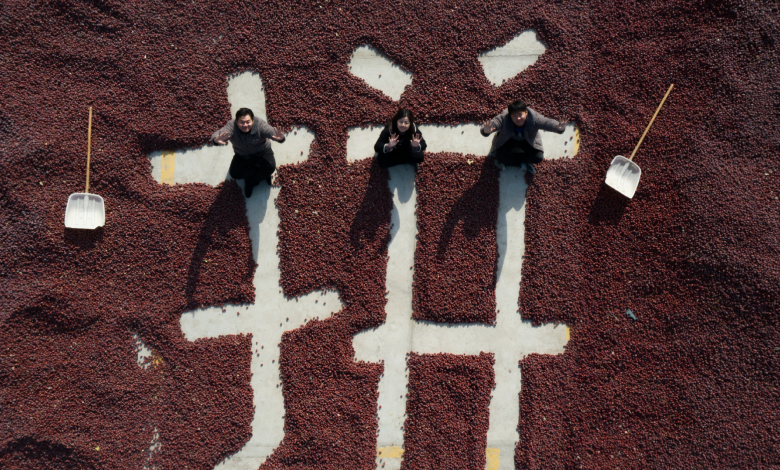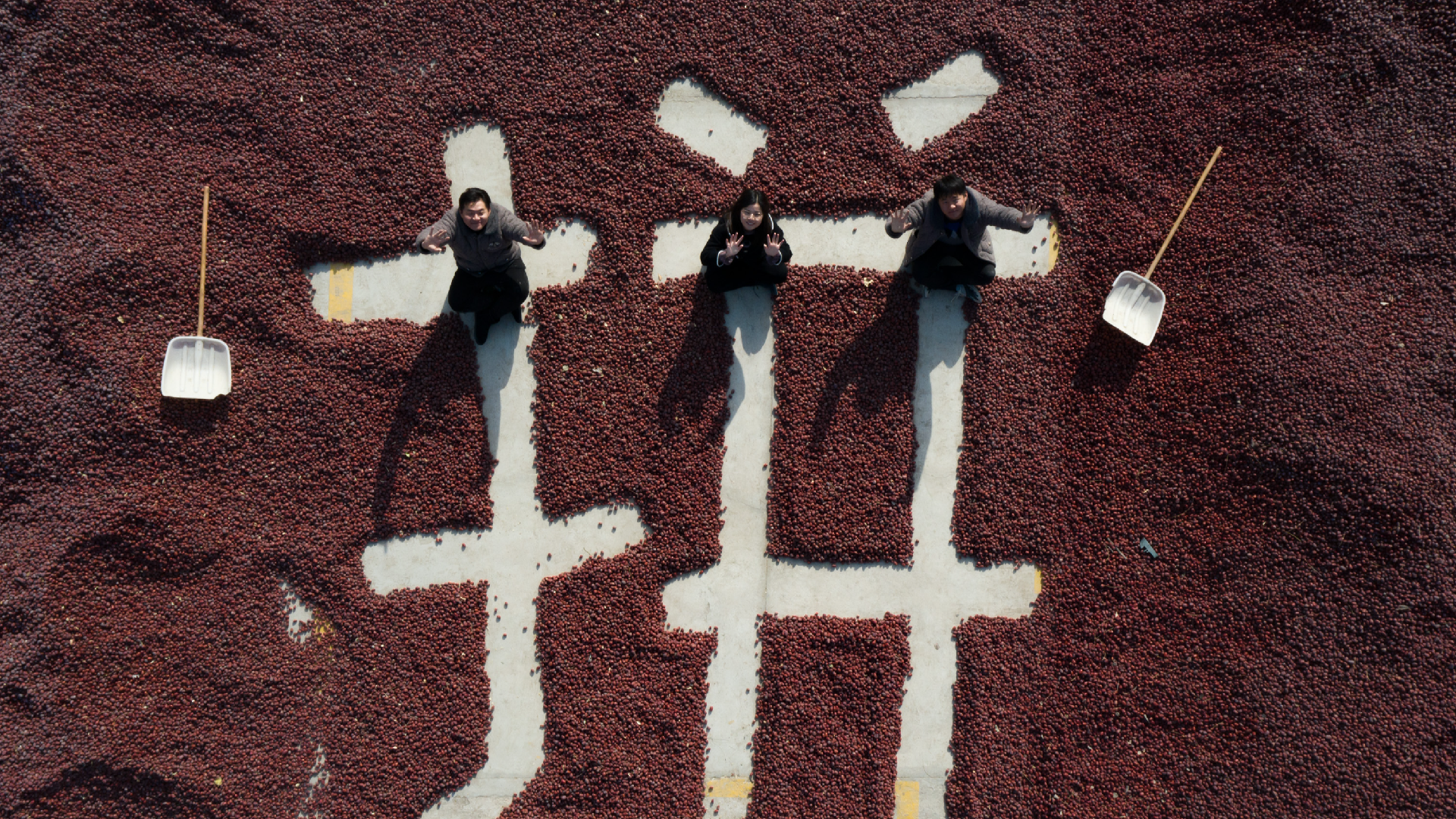Transforming desolation: Resurgence of a desert city in Xinjiang

[ad_1]

Thirty years ago, Xie Xiaoyun, who grew up in central China’s Hunan Province, could never have imagined that she would spend her whole life battling the harsh desert in northwest China’s Xinjiang Uygur Autonomous Region.
“The wind blew, it wasn’t just sand – it was a black sandstorm,” Xie recalled. “You couldn’t open your eyes, and the sky turned dark several times a year.”
The black sandstorms that Xie describes devastated the city of A’lar, located on the edge of the Taklimakan Desert in Xinjiang. For years, these black sandstorms disrupted daily life and devastated agricultural production, sweeping away topsoil and seeds and burying fields, pastures and villages under layers of sand. The soil became infertile, ultimately affecting agriculture and damaging the local economy.
But Xie has never been alone in this struggle. Her story is a part of the efforts made in A’lar, where three generations of residents have worked together to overcome environmental challenges.
<img src='https://news.cgtn.com/news/2024-10-08/Transforming-desolation-Resurgence-of-a-desert-city-in-Xinjiang-1xwyrxtoJfW/img/e3be97d7d1b14341b53a01ae9fd23121/e3be97d7d1b14341b53a01ae9fd23121.png' alt='For years, Xie has worked in the fields, teaching local people how to plant and experiment with ways to improve the salty, alkaline soil. /Photo provided by A'lar '
Marching over 20 kilometers into the desert
For years, Xie has worked in the fields, teaching locals how to plant and experimenting with ways to improve the salty, alkaline soil. One of her greatest achievements is successfully introducing four-winged saltbush, a highly drought-resistant and salt-tolerant species. The plant can grow to about 1.8 meters within four years, with roots extending over 4 meters deep. Once established, it requires no further irrigation and can be harvested as animal feed, making it a sustainable solution in an arid ecosystem.
At first, few believed Xie could succeed. In 2019, the survival rate of the 7,000 mu (about 466 hectares) of saltbush she had planted was below 10 percent. However, by living on site and dedicating two months to replant each bush by hand, Xie and her team saw the survival rate rise to 70 percent on 3,000 mu (about 200 hectares) of land by 2020. Today, her efforts have helped reclaim 80,000 mu (about 5,333 hectares) of previously barren land, transforming alkaline soil into productive fields.
<img src='https://news.cgtn.com/news/2024-10-08/Transforming-desolation-Resurgence-of-a-desert-city-in-Xinjiang-1xwyrxtoJfW/img/9b3d7cb40e374b9284d715f37f739e00/9b3d7cb40e374b9284d715f37f739e00.png' alt='Xie Xiaoyun (center) explains planting techniques. /Photo provided by A'lar '
Xie’s work is emblematic of the city’s broader fight against desertification. In the 1950s, A’lar was little more than a barren land, marked by just two tamarisk shrubs shielded by a makeshift wall of earth and wood constructed by reclamation teams. Today, it has transformed into a thriving oasis that spans 6,900 square kilometers, all thanks to the dedication of individuals like Xie and the tireless efforts of three generations of locals.
Thanks to the relentless efforts of the team, the oasis has expanded over 20 kilometers into the desert. Among them is Xia Wanlin, a dedicated forest ranger who has spent the past decade patrolling nearly 70,000 kilometers, planting tens of thousands of trees, and living in ecological forests for much of the year.
Proudly pointing to a forest on the edge of the desert, Xia said, “I planted this with our team when I was in high school. Look how lush it is now.”
“This is all I’ve ever done in my life, and after I retire, my children and grandchildren will continue this work,” he said.
Turning desert into an asset
The oasis city now firmly believes that controlling desertification is not only about survival but can also serve as a valuable economic asset. “Through the harmonious coexistence of humans and nature, we should not only control and manage the desert well but also turn it into a gold mountain,” Xie said.
Her vision aligns with China’s decades-long efforts to integrate ecological protection with economic growth, agriculture and tourism.
Since the 18th National Congress of the Communist Party of China (CPC), Chinese President Xi Jinping, also general secretary of the CPC Central Committee, has placed significant emphasis on combating desertification, prioritizing it in his vision for ecological civilization. His numerous visits to affected regions and repeated focus on sustainable development have provided essential guidance for ecological conservation in the new era.
<img src='https://news.cgtn.com/news/2024-10-08/Transforming-desolation-Resurgence-of-a-desert-city-in-Xinjiang-1xwyrxtoJfW/img/194c16ad23544662aa84d0e809c4f328/194c16ad23544662aa84d0e809c4f328.jpeg' alt='The rice planting base in A'lar is opening the sickle for harvest. /Photo provided by A'lar '
As greenery spreads across A’lar, sandstorms have subsided and fertile land has been reclaimed. More than just surviving the desert, A’lar has transformed it into an asset. In 2013, the city began developing the “Gateway to the Desert” scenic area, which now draws visitors from all over China each year.
A’lar has embarked on a journey to turn its sand into gold, linking desertification control with economic growth and improvements in livelihoods. The city has established a circular economic system that prioritizes green and low-carbon growth, resulting in the production of some of China’s most renowned rice, once cultivated in barren desert.
A’lar’s success is a testament to the resilience and ingenuity of those who have dedicated their lives to transforming a desert wasteland into a sustainable and prosperous home.
New generations, new dreams
“The protective forests should be built wherever the fields develop,” said Xie. Now, green barriers have been established to safeguard the pear orchards, apricots, cotton and red date gardens of A’lar, turning ecological benefits into economic gains.
<img src='https://news.cgtn.com/news/2024-10-08/Transforming-desolation-Resurgence-of-a-desert-city-in-Xinjiang-1xwyrxtoJfW/img/6b64ffe8ebca4111b8b13f3747461d4e/6b64ffe8ebca4111b8b13f3747461d4e.jpeg' alt='Witnessing the remarkable changes and development in her hometown, Zhao Yan decided to go back home and launch business to sell quality dates. /Photo provided by Zhao Yan '
The oasis, nurtured by generations, now draws more young people back to their hometowns. Zhao Yan, a post-90s native of A’lar, was accepted into a university in Beijing and later pursued her master’s degree in Australia, where she initially stayed for work.
In the summer of 2015, a chance visit brought Zhao back to China for tourism. Witnessing the remarkable changes and development in her hometown filled her with pride and ignited her determination to return home as a witness to the new era, launching a business to sell quality local products nationwide.
<img src='https://news.cgtn.com/news/2024-10-08/Transforming-desolation-Resurgence-of-a-desert-city-in-Xinjiang-1xwyrxtoJfW/img/4fc5a203224c43f1b812231decb7b782/4fc5a203224c43f1b812231decb7b782.png' alt='Zhao and her two younger brothers renovate their father's former factory into a processing plant. /Photo provided by Zhao Yan '
Thus, Zhao gave up her green card and returned to the desert oasis her parents had cultivated to grow and sell dates. Her two younger brothers also returned from other cities, joining her to renovate their father’s former factory into a processing plant.
In their third year of entrepreneurship, sales from their store on Chinese e-commerce platform Pinduoduo alone reached 30 million yuan ($4.25 million).
Zhao’s choice, alongside the efforts of the whole city, signals the power of persistence of the region. The desert, once an enemy, has become a foundation for prosperity – one that will continue to grow as new generations return to the oasis their parents and grandparents built.
[ad_2]
Source link





